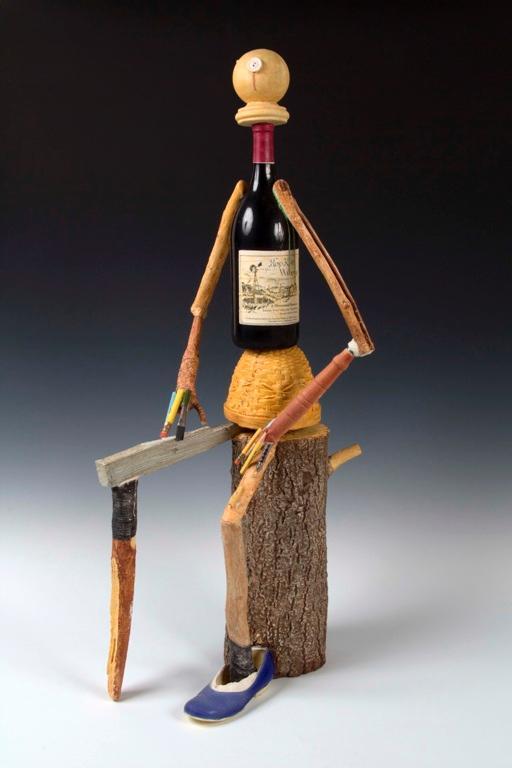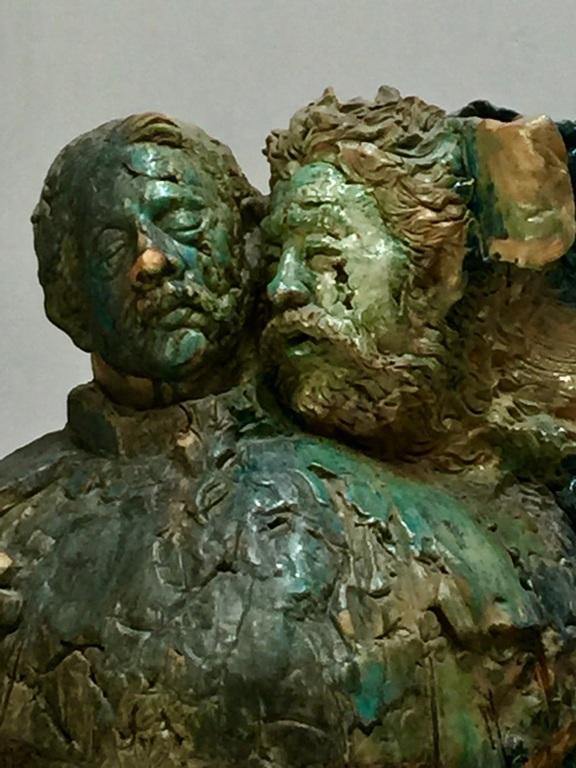Exhibition Dates: November 7, 2018 – January 11, 2019
Artist Talk & Reception: November 9, 2018, 5pm
Richard Shaw and Wanxin Zhang are sculptors whose primary medium is clay. While both artists draw on some very similar influences their use of clay to produce compelling sculpture stand in stark contrast to one another.
Richard Shaw is a native California artist best known for his trompe l’oeil (French for "fool the eye") style. Shaw replicates everyday objects, the stuff of daily life, into whimsical still lifes that appropriate mass culture while also drawing on personal experiences and memories.
Wanxin Zhang was born in Changchun, China, and spent his formative years under Mao's regime during the 1960s and 1970s. Zhang work draws on the lore and history of his native China and Bay Area funk art. Carrying messages of social and political commentary.
Richard Shaw
Richard Shaw is renowned for his appealingly absurdist work with trompe d’oeil (“fool the eye”) mimicry, a tradition with deep art historical roots including famous 19th century American painters, but also the 16th century French ceramic platters of Bernard Palissy. This exhibition foregrounds a new series of plates inspired by the platters of Palissy that feature cast forms of beach trash, serving as reminders that contemporary beachcombers are more likely to find various sorts of detritus on their strolls, instead of the beautiful shell and corals that earlier generations might have collected. Shaw has long explored the reciprocal influence of porcelain that originated in the Chinese ceramics center of Jingdezhen that became the model for 18th century British blue and white forms of Staffordshire, Wedgwood and Spode and later American copies. In one large plate in the exhibition, Shaw has used these Chinese conventions to depict an original Newport Beach scene from his youth, complete with figures carrying surfboards, the Balboa Pavilion and other structures from China Cove.

The Canton Lady
More info: richardshawart.com
Wanxin Zhang
Wanxin Zhang’s work also engages with art historical sources, but with a more expressionist approach of roughly modeled textures and surfaces that are thickly encrusted with glaze. Zhang first achieved wide recognition for his life-size, typically male figures, solemnly standing and dressed in long coats, recalling the famous army of eight thousand Xi-an ceramic warriors from the funerary burials of Qin Shi Huang, the first Emperor of China, in 210-209 BCE. However, Zhang’s warriors sometimes sport unexpected accessories like a gas mask that suggests global environmental pollution. Zhang has also alluded to other forms from Chinese culture including scholar rocks, opera masks, a paper box for take-out food, and a full size version of one of China’s adorably popular panda bears. Sometimes, his works address the strained geopolitical relationships from our contemporary moment. In one that blends fractured architectural motifs modeled after the US Capitol Building and the distinctively curved roof of Beijing’s Forbidden City, he suggests that friction can also lead to arousal.

Unbelievable Promise
Themes of humor, environmentalism and cross-cultural exchange connect the work of both artists. Their playful sculptures reference the specific international art history of ceramics as a weapon to dismember conventional expectations and attitudes toward clay.
Written by Mark Johnson
Professor of Art
San Francisco State University
More info: wanxinzhang.com